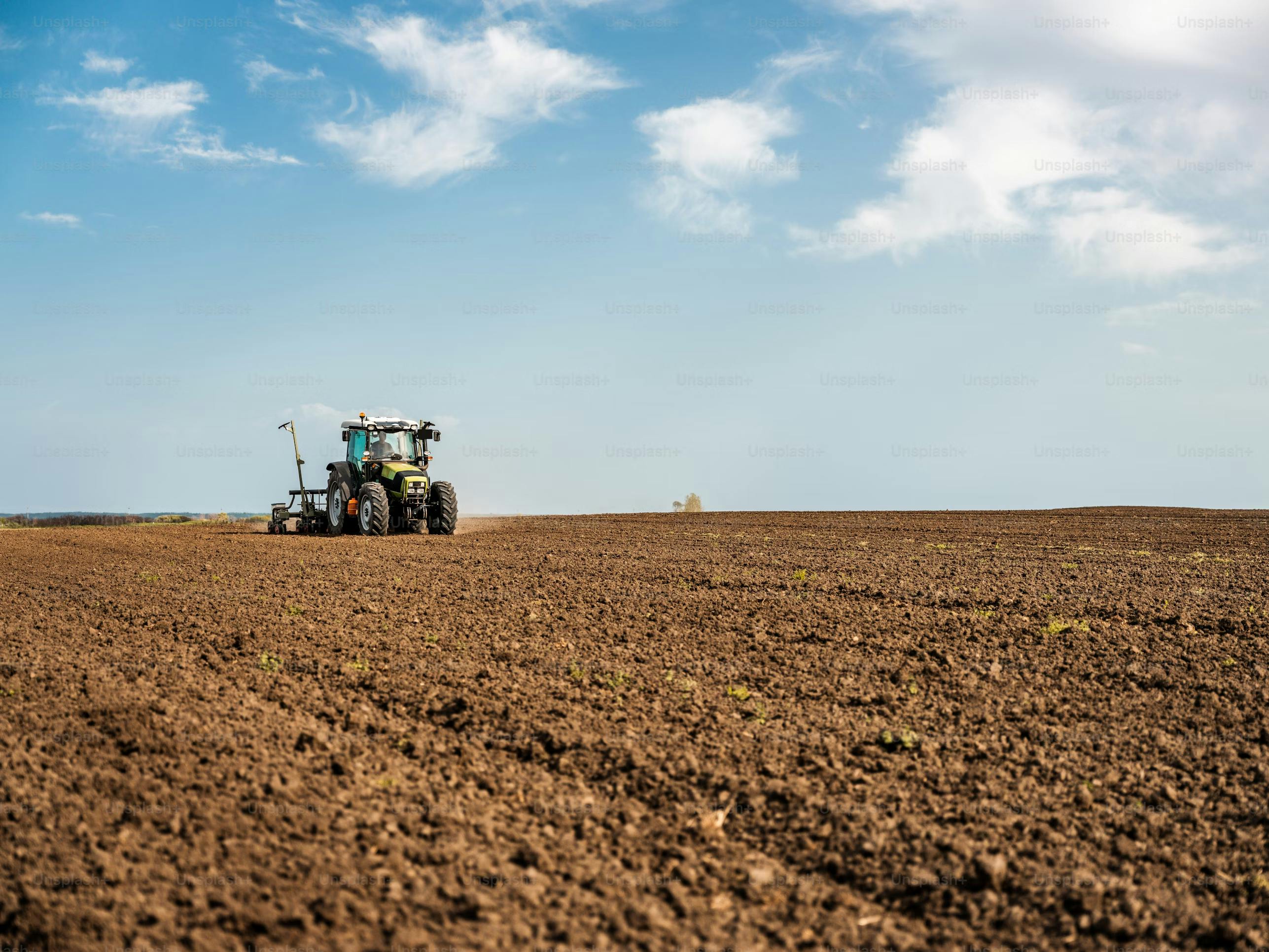Cotton gin operators face two layers of safety regulations: Federal OSHA standards and state-specific rules. Federal OSHA provides baseline protections like equipment guarding and training requirements under Title 29 CFR Part 1928, but state plans often add stricter rules tailored to local needs. For example, California's 2025 updates include wildfire smoke protections and autonomous equipment regulations. Here's what you need to know:
- OSHA Standards: Focus on guarding machinery and training workers, but exclude cotton gins from cotton dust regulations.
- State Rules: States like California enforce stricter measures, including heat safety and dust control, adding complexity for multi-state operators.
- Biggest Challenges: Navigating overlapping rules, meeting stricter state standards, and ensuring compliance across jurisdictions.
- Training Solutions: Programs like the National Cotton Ginners Association's certification courses help operators stay compliant.
Quick Comparison
| Regulation Area | Federal OSHA | State Plans |
|---|---|---|
| Cotton Dust Standards | Excludes cotton ginning operations | May include stricter dust control rules |
| Heat Safety | No specific standard | States like California enforce detailed rules |
| Wildfire Smoke | Not addressed | California mandates respirators at AQI 151+ |
| Small Farm Enforcement | Limited by federal funding | States can enforce using state funds only |
Understanding both federal and state regulations is key to keeping workers safe and avoiding costly fines. Training, like NCGA's programs, ensures compliance with these complex requirements.
OSHA 5 Things to Know about Grain Safety
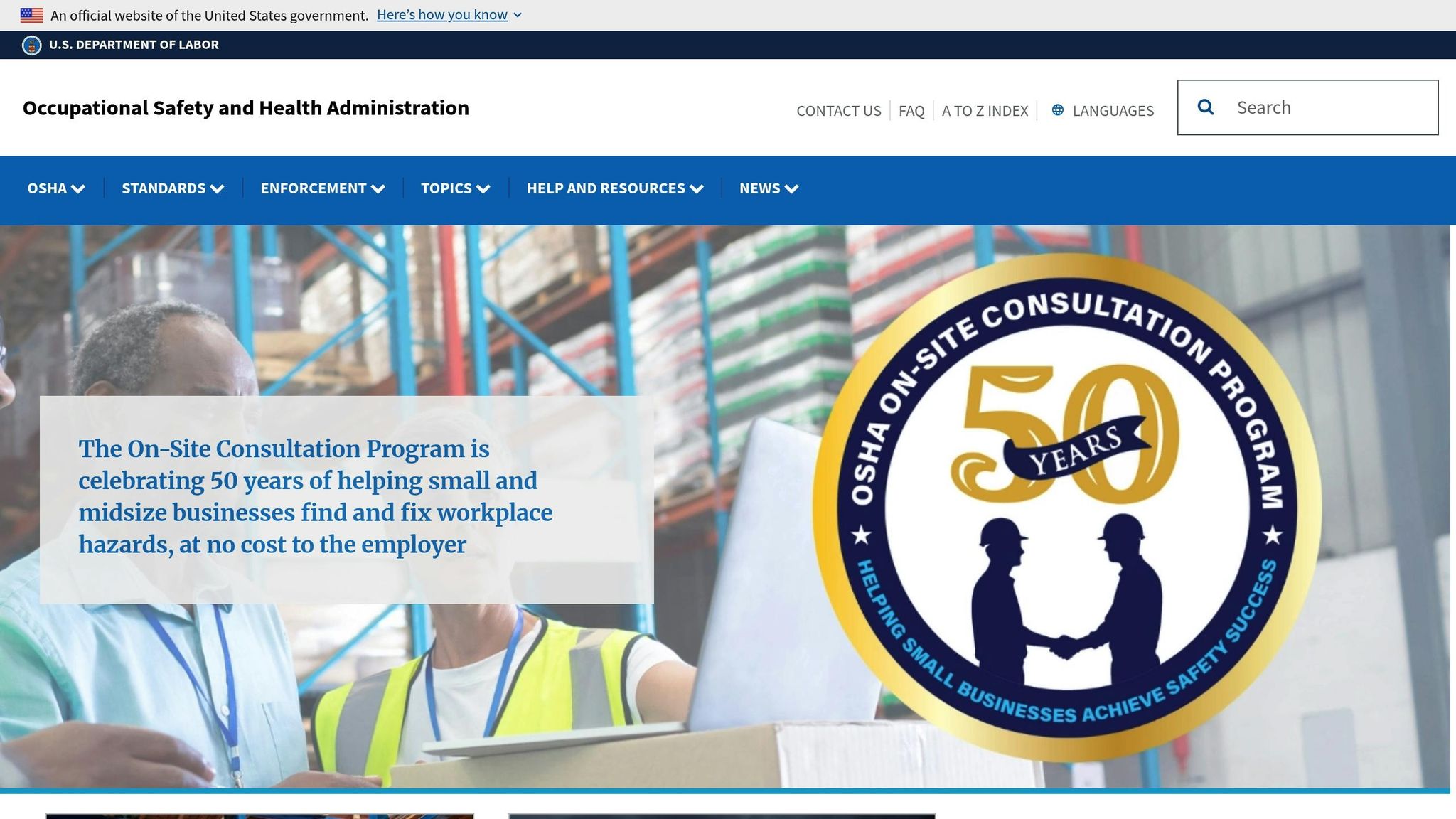
Federal OSHA Safety Standards for Cotton Gins
Federal OSHA regulations for cotton gins are outlined in Title 29 CFR Part 1928. Since cotton gins are classified as agricultural operations, they are subject to limited standards. One key regulation, §1928.57, focuses on equipment guarding. However, the cotton dust standard (§1910.1043) specifically excludes cotton ginning. This means that, unlike textile mills that must comply with strict dust limits, cotton gins rely on the general duty clause under Section 5(a) to address potential hazards that aren't explicitly covered. These federal rules provide the foundation for the safety measures detailed below.
Key Elements of OSHA Safety Programs
OSHA's safety programs for cotton gin operations emphasize two main areas: equipment guarding and employee training. Employers are required to train all workers on the safe operation and servicing of equipment. This includes clear practices, such as:
- Keeping all guards securely in place during machine operation.
- Prohibiting unauthorized riders on equipment.
- Ensuring machinery is completely stopped before performing maintenance tasks.
Specific guarding requirements are detailed by OSHA. For example, if guards are within 2 inches of moving parts, they must use 16-gauge woven wire with openings no larger than 3/8 inch. For sheet metal guards, a thickness of 22-gauge is required, regardless of distance from moving components.
Additionally, power transmission components on gin stands must be fully enclosed, guarded by location, or protected by railings. Drives between gin stands must also be guarded to prevent access to the space between machines. When traditional guarding isn’t feasible, employers are required to use guardrails or fences. OSHA also mandates lockout procedures for electrical power before any maintenance is performed on farmstead equipment.
Common Cotton Gin Hazards Addressed by OSHA
OSHA addresses several common hazards in cotton gin operations through specific safety measures. For instance, gin stands must have permanently installed guards that prevent contact with moving gin saws. These guards are designed to stay in place during normal operations to ensure continuous safety.
Lint cleaners with doors that allow access to moving saws must be equipped with fixed barrier guards. These barriers are designed to prevent direct contact with the saws, ensuring that workers cannot accidentally touch them while they are in motion.
Improper guarding can lead to devastating injuries or even fatalities. Machine guarding violations are consistently among OSHA's top 10 safety violations. Non-compliance can result in steep financial penalties. As of January 2024, fines for serious violations can reach up to $16,131 per violation, while willful or repeated violations may incur penalties as high as $161,323 each.
In cases where specific agricultural standards do not address a hazard, OSHA inspectors can invoke the general duty clause. This clause requires employers to ensure a workplace free from recognized hazards, even if no specific standard exists for a particular issue.
State-Specific Safety Standards for Cotton Gins
Federal OSHA sets a baseline for safety in cotton gin operations, but many states have gone a step further by implementing their own regulations. These state-specific rules often address unique local conditions that federal guidelines may not fully cover. A standout example is California's Occupational Safety and Health Administration (Cal/OSHA), which has introduced stricter safety measures tailored to the state's particular needs.
Navigating both federal and state regulations can be a complex task for cotton gin operators. Below, we break down some of the key state updates and regional examples to highlight these differences.
Cal/OSHA's 2025 Rule Changes
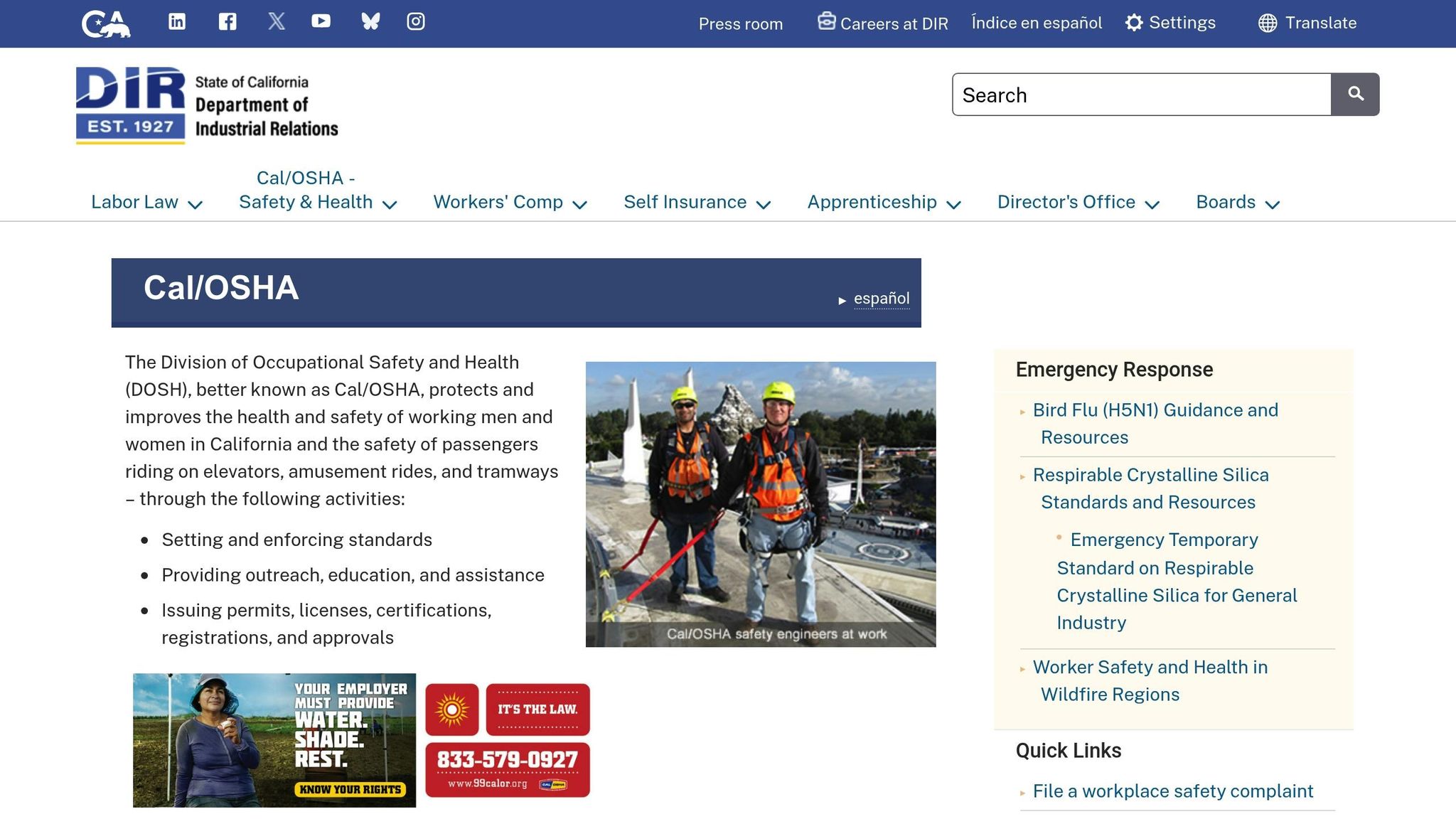
Cal/OSHA has announced updates for 2025 that will directly impact cotton gin operations. One major change involves new wildfire smoke regulations. Under these updates, employers must provide NIOSH-approved respirators, such as N95 masks, to agricultural workers when the Air Quality Index (AQI) for PM2.5 reaches 151 but stays below 300. If the AQI rises above 300, respirator use becomes mandatory. For non-agricultural workers, respirators are provided at an AQI of 151 but are only required if the AQI exceeds 500.
Other updates include aligning the Walking Working Surfaces regulation with Federal OSHA standards adopted in 2017. Additionally, first aid kit requirements will be simplified, allowing compliance with national standards like ANSI, rather than needing physician approval. Another noteworthy development is Cal/OSHA's openness to regulatory reforms concerning autonomous agricultural equipment. Starting in October 2024, the state signaled a willingness to allow autonomous vehicles to operate without onboard operators, a shift that could influence cotton gin operations relying on automated machinery.
Regional Challenges and Standards
Safety standards in cotton-growing regions often reflect local environmental and operational challenges that federal regulations may not fully address. Cotton is grown in a range of climates - from desert to temperate and tropical - and states like California, Georgia, Mississippi, and Texas face unique conditions that shape their safety requirements. For instance, extreme weather and climate variability in these regions have prompted the creation of specialized safety measures.
Harvesting methods also play a role in shaping regional standards. Stripper-harvested cotton, for example, produces significantly more trash during the ginning process - up to six or seven times more than picker-harvested cotton. This increases dust exposure risks, requiring stricter safety protocols. Additionally, the seasonal nature of cotton gin work presents its own challenges. Workers typically spend about half their time outside the gin shed, away from cotton dust. Many gins are partially open-sided with natural ventilation, and the ginning season usually lasts four to twelve weeks. On average, employees work around seven weeks per year, clocking roughly 60 hours a week during that time.
While some in the industry worry about the cost of complying with these regulations, state agencies remain focused on addressing risks specific to their regions. For operators managing facilities across multiple states, the challenge lies in balancing these compliance costs with the priority of keeping workers safe.
Federal vs. State Safety Standards Comparison
For cotton gin operators, understanding the nuances between federal and state safety regulations is essential. While federal OSHA standards set the groundwork, state-specific rules often add extra layers of complexity, especially for businesses operating across multiple states.
At the federal level, OSHA outlines safety requirements under Title 29 CFR Part 1928, Section 1928.57, which focuses on guarding farm field equipment and cotton gins. However, the cotton dust standard in Section 1910.1043(a) explicitly excludes cotton ginning operations. In practice, applicable federal regulations include Title 29 CFR Part 1928 and certain general industry standards. State regulations, on the other hand, often build upon these federal guidelines, introducing additional requirements.
Federal vs. State Standards Table
The differences between federal and state safety standards are evident in several key areas:
| Regulation Area | Federal OSHA | State Plans |
|---|---|---|
| Cotton Dust Standards | Excludes cotton ginning operations | May include specific rules for cotton gin dust control |
| Field Sanitation | Required under federal standards | 8 of 22 state jurisdictions opted out |
| Temporary Labor Camps | Required under federal standards | 8 of 22 state jurisdictions opted out |
| Heat Safety | Based on California's model for a national standard | States like California enforce detailed heat illness prevention |
| Small Farm Enforcement | Limited by the Appropriations Act provisions | States can enforce using 100% state funding |
State Plans must meet or exceed the effectiveness of federal OSHA standards. Currently, 29 OSHA-approved State Plans operate across the country, each with its own approach to occupational safety and health. These variations create unique challenges for operators, particularly those managing facilities in multiple states.
Compliance Challenges for Multi-State Operators
For cotton gin operators working across state lines, navigating the patchwork of federal and state regulations can be daunting. Each state enforces safety standards differently, with some focusing less on agricultural operations while others impose stringent rules. This inconsistency means operators must adapt to varying degrees of enforcement and inspection protocols.
Adding to the complexity, post-harvest activities often fall under OSHA's general industry standards, requiring operators to comply with broader regulations. Some states also enforce safety rules on small farms using entirely state-funded programs, provided they maintain proper accounting systems to ensure no federal funds are involved.
Federal OSHA applies only a limited number of standards to agricultural operations, leaving room for state plans to introduce stricter rules. As a result, operators must stay informed about both federal updates and state-specific changes. This often demands dedicated compliance teams and expertise to manage the regulatory requirements across multiple jurisdictions.
sbb-itb-0e617ca
Training and Resources for Compliance
Adhering to OSHA and state safety standards is a critical part of ensuring safe operations in cotton ginning. To meet compliance requirements, effective training plays a central role. Federal OSHA mandates that employers train every employee in safe equipment operation both at the time of assignment and on an annual basis. Training programs must align with federal and state regulations, tailored to address specific operational needs.
Because state rules often add additional layers to federal standards, training must cover key areas like proper machine guarding, lockout/tagout procedures, and safe operating practices. Programs like those offered by the National Cotton Ginners Association (NCGA) are designed to meet these challenges head-on.
National Cotton Ginners Association Training Programs
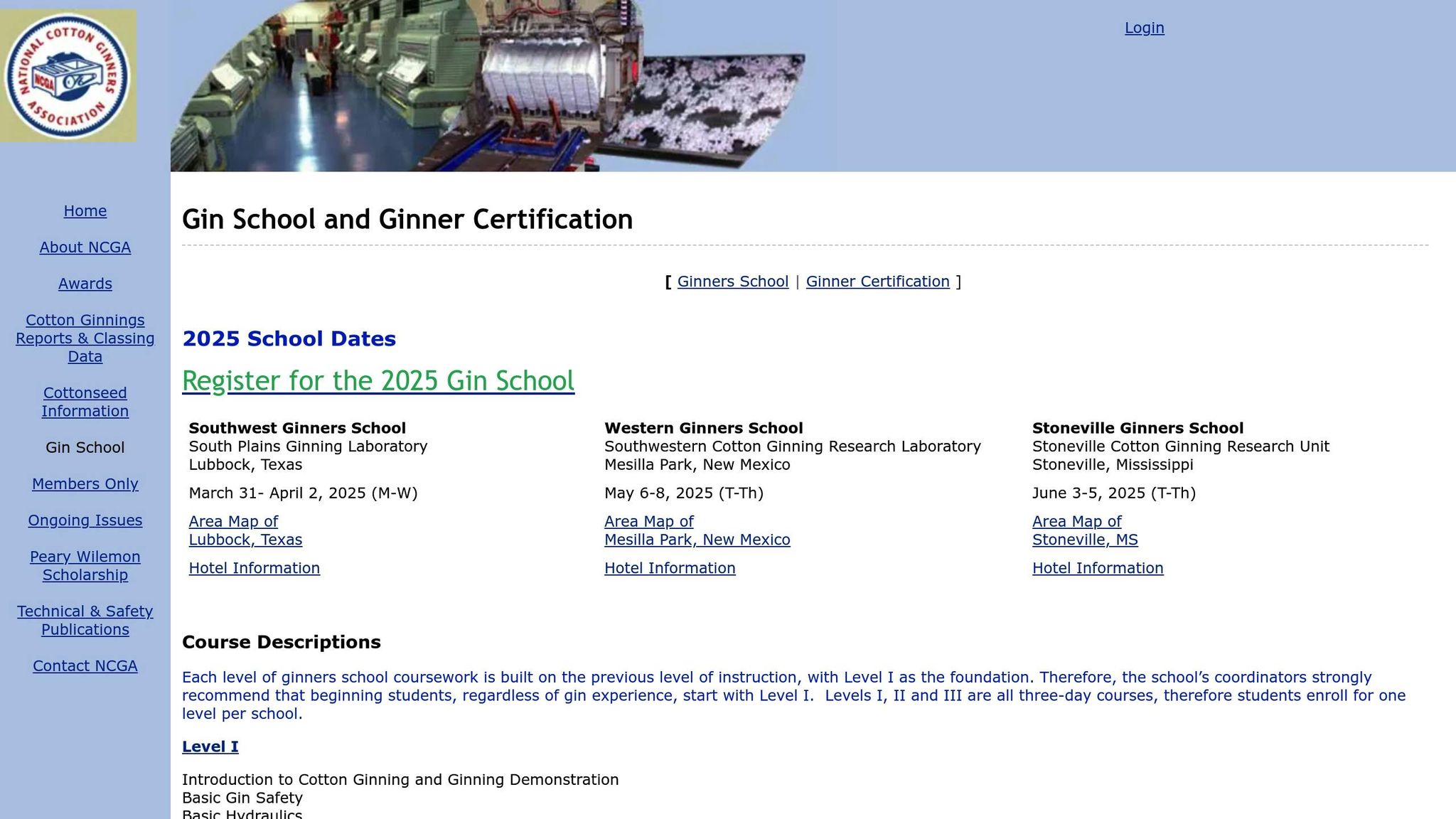
The NCGA offers a Cotton Ginner Certification Program that includes three levels of training, each building on the previous one:
- Level I: Focuses on basic safety and ginning operations.
- Level II: Covers more advanced operational procedures.
- Level III: Prepares participants for advanced management roles and includes a certification exam.
To make training accessible, the NCGA hosts courses at three regional locations:
| School Location | Dates | Facility |
|---|---|---|
| Southwest Ginners School | March 31-April 2, 2025 (M-W) | South Plains Ginning Laboratory, Lubbock, Texas |
| Western Ginners School | May 6-8, 2025 (T-Th) | Southwestern Cotton Ginning Research Laboratory, Mesilla Park, New Mexico |
| Stoneville Ginners School | June 3-5, 2025 (T-Th) | Stoneville Cotton Ginning Research Unit, Stoneville, Mississippi |
Each training level costs $250, and the Level III certification exam is $50 per participant. Certified ginners are required to complete 12 hours of continuing education (CE) credits every three years to maintain their certification. Continuing education courses are conveniently offered alongside all three schools, ensuring certified professionals stay up to date with the latest safety standards and operational improvements.
Using cottongins.org as a Resource
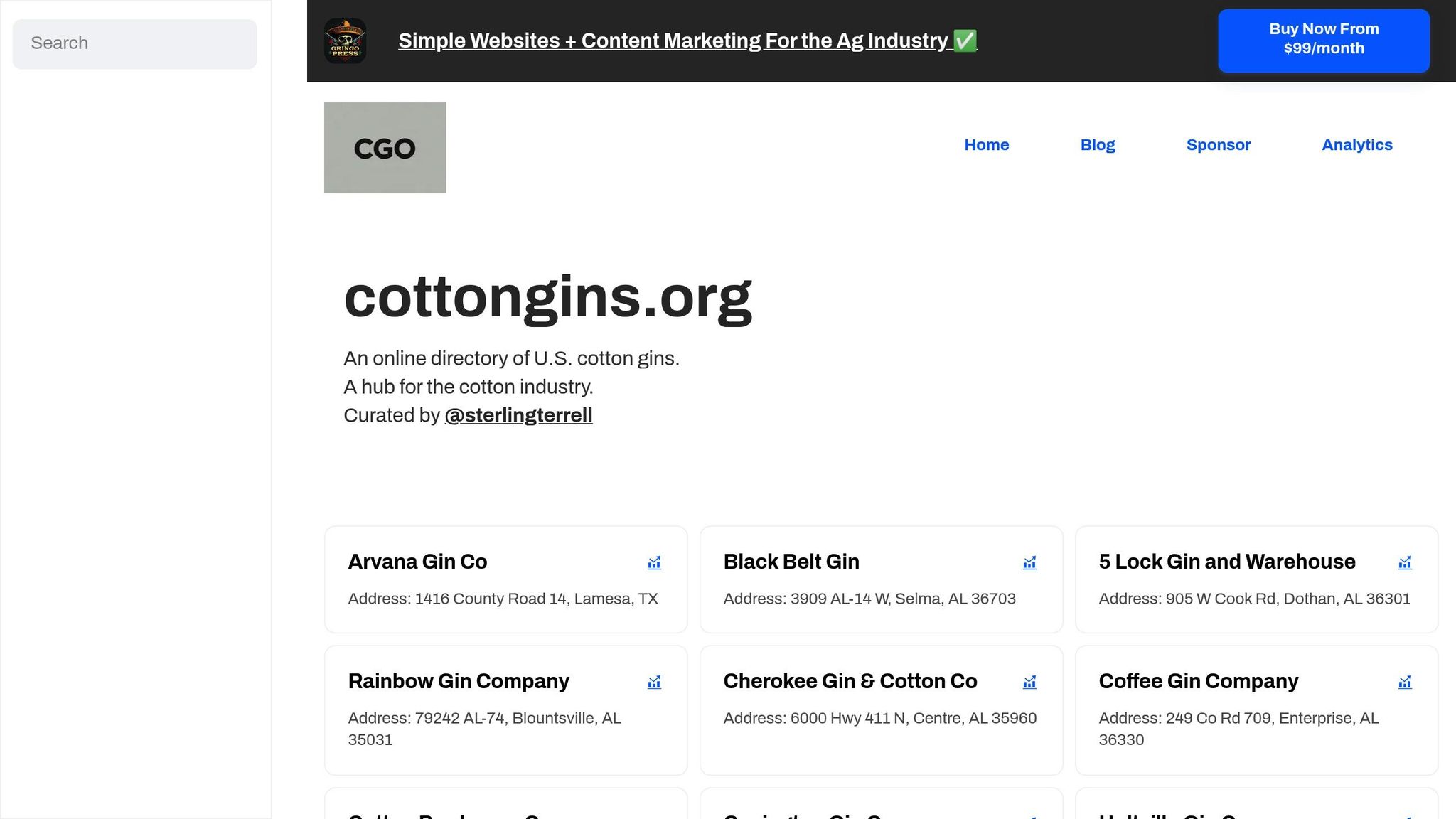
Cotton gin operators can also benefit from the resources available on cottongins.org. This platform provides a directory of cotton gins across the country, which is especially helpful for multi-state operators navigating varying regional regulations.
In addition to its directory, cottongins.org offers sponsorship opportunities for operators looking to increase their visibility within the industry while contributing to educational efforts. Options include:
- Sponsored Posts: $200 per post
- Official Sponsorships: $200 per month
- Featured Sponsorships: $400 per month
These sponsorships allow operators to share safety tips and training resources with the broader cotton ginning community.
For staying informed, the platform maintains a mailing list that delivers updates on regulatory changes, including new OSHA interpretations and state-specific rules. This ensures operators are always aware of shifts that could impact compliance.
The NCGA also offers online resources through its website, featuring documents that explain how updates like the Hazard Communication Standard (HCS) affect the cotton ginning industry. These materials are invaluable for adapting training programs to meet evolving regulatory requirements.
Additionally, operators should focus on specific compliance areas, such as SPCC Plan implementation and USDOL OSHA rules for powered industrial trucks. These topics often require specialized training beyond general safety programs. By combining structured certification programs with ongoing education and available resources, operators can build a strong foundation for maintaining comprehensive safety and compliance practices.
Conclusion and Key Takeaways
For cotton gin operators, understanding the nuances between federal OSHA regulations and state-specific standards is essential for maintaining safe and compliant operations. OSHA's rules, particularly under Title 29, Part 1928 (§1928.57), emphasize equipment guarding as a core safety requirement. Interestingly, cotton gins are exempt from OSHA's cotton dust standard (§1910.1043(a)), which places the focus on agricultural standards in Part 1928 and the general duty clause to address workplace hazards. This regulatory framework shapes the foundation for targeted safety measures.
Annual training on equipment safety plays a pivotal role in meeting OSHA requirements and aligning with stricter state protocols. Programs like those offered by the National Cotton Ginners Association provide a structured approach to achieving compliance. For operators managing facilities across multiple states, adopting the most stringent standards ensures consistency and readiness for diverse enforcement practices.
Prioritizing comprehensive training and compliance efforts leads to tangible benefits: fewer workplace accidents, lower insurance premiums, and avoiding costly penalties. Resources such as cottongins.org help operators stay informed by providing updates on regulations and access to industry-wide safety information. By actively addressing both federal and state standards, cotton gin operators can create safer workplaces, ensure long-term operational success, and safeguard their workforce. This requires an ongoing commitment to education, regular safety checks, and staying informed through industry associations and expert resources.
FAQs
What are the differences between federal OSHA standards and state regulations for cotton gins, and why should operators know both?
Federal OSHA Standards for Cotton Gins
The Occupational Safety and Health Administration (OSHA) lays out specific safety guidelines for cotton gins under 29 CFR Part 1928. These rules are designed to address common risks like machinery-related injuries, fires, and falls. They set the minimum safety standards that all agricultural operations, including cotton gins, must follow.
However, states with OSHA-approved plans have the flexibility to create their own safety regulations. These state rules must meet or exceed the effectiveness of federal standards and may include stricter or more tailored requirements to address local conditions.
For cotton gin operators, understanding both federal and state regulations is not just a legal obligation - it’s critical for workplace safety. Non-compliance can lead to penalties and, more importantly, put workers at greater risk of injury. Staying updated on these standards helps protect employees while ensuring operations run smoothly.
What challenges do multi-state cotton gin operators face with safety and labor compliance, and how can they address them effectively?
Multi-state cotton gin operators often encounter hurdles because of the differences between federal OSHA standards and state-specific safety and labor regulations. These discrepancies can lead to confusion, resulting in compliance oversights and potential penalties. Some of the most common problems include dealing with state-specific safety requirements, unpaid overtime, substandard housing conditions, and poor record-keeping practices.
To address these issues, operators should implement clear compliance programs. These programs should focus on regular training that covers both federal and state regulations, maintaining precise records, and conducting proactive audits to catch potential problems early. Collaborating with industry associations and utilizing resources from the Department of Labor can provide valuable guidance. Consistently reviewing and updating operational practices is also essential to stay aligned with changing regulations and minimize the risk of violations.
How do training programs from the National Cotton Ginners Association help cotton gin operators meet both OSHA and state safety standards?
The National Cotton Ginners Association (NCGA) offers training programs designed to help cotton gin operators meet OSHA regulations and state-specific safety standards. These sessions cover crucial topics like fire prevention, machinery safety, and the correct use of personal protective equipment (PPE), giving operators the tools they need to maintain a safer workplace.
By focusing on both federal and state guidelines, the programs ensure operators are well-prepared to identify and address potential hazards. Hands-on training and regular safety meetings further adapt these practices to the unique needs of each gin, promoting a strong emphasis on safety and minimizing the likelihood of workplace accidents.

